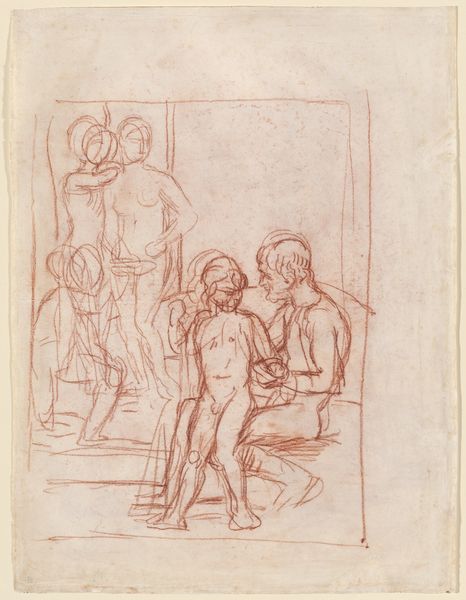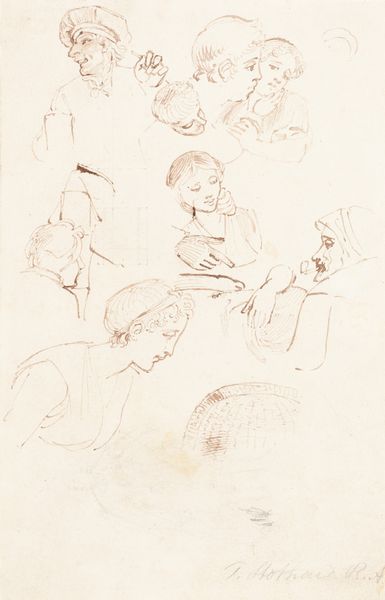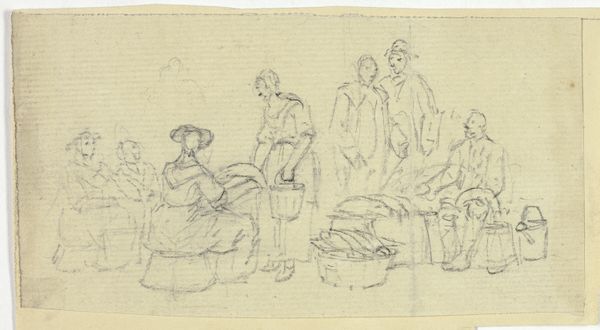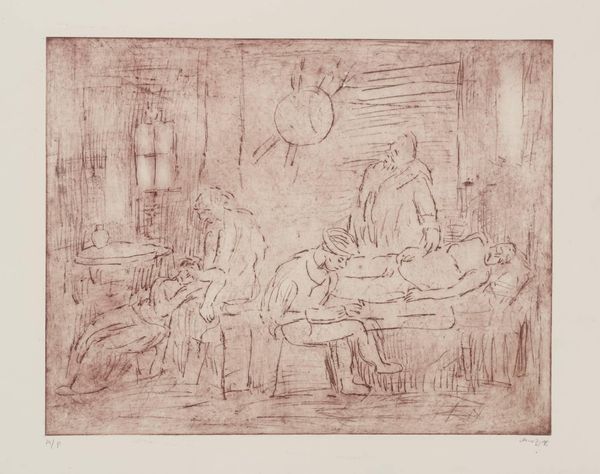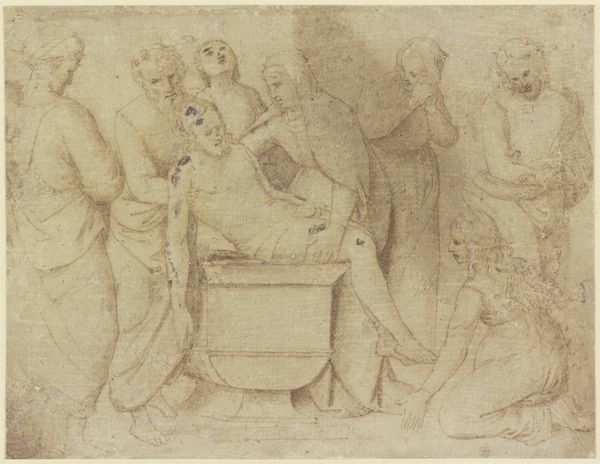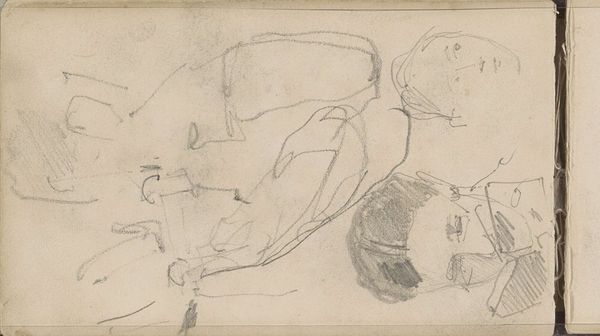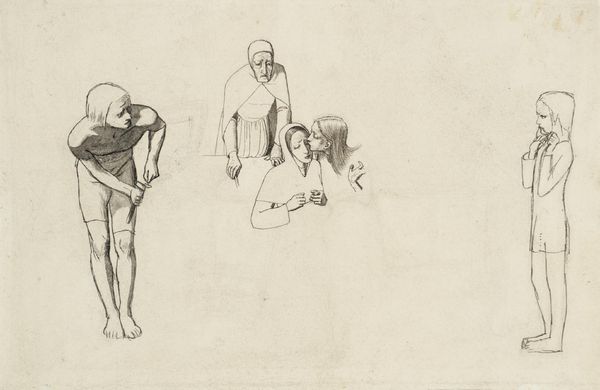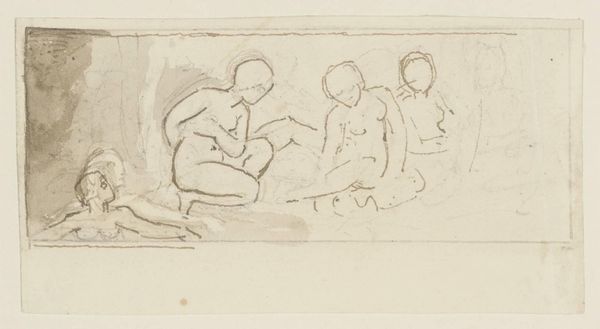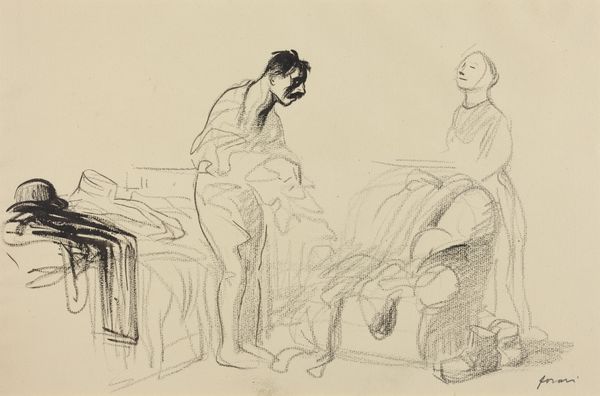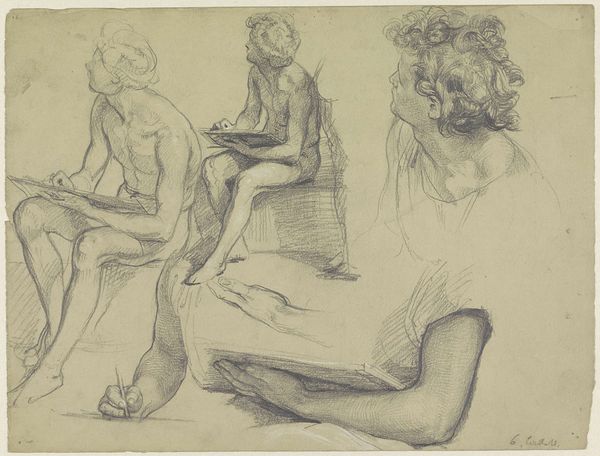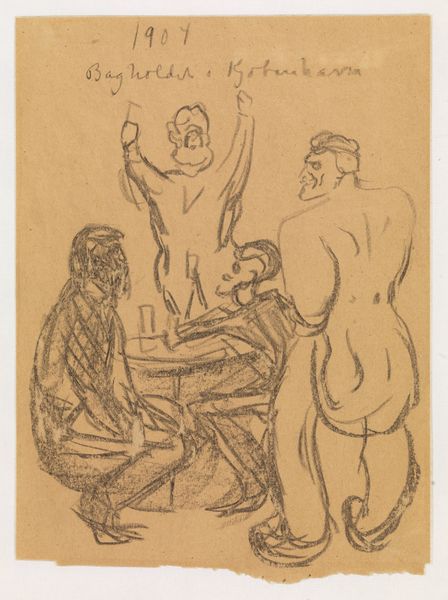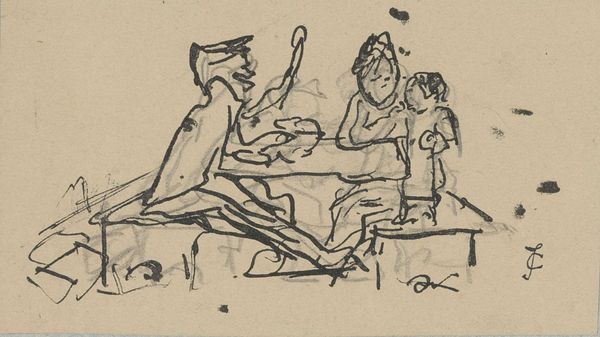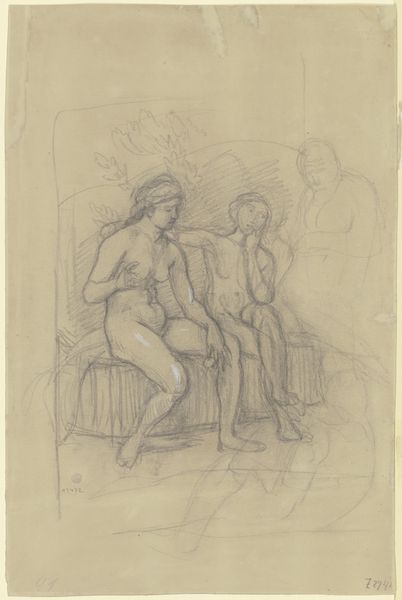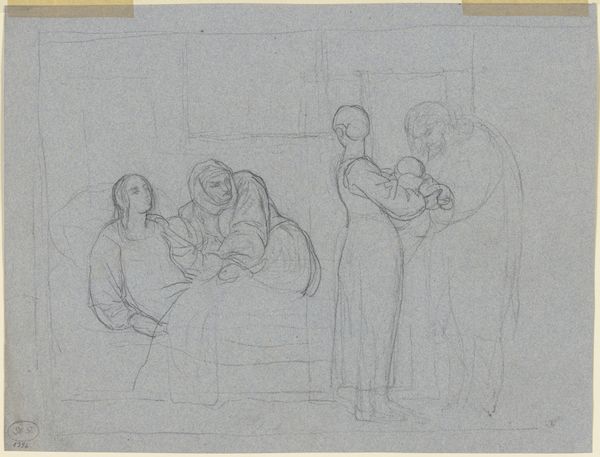
drawing, print, etching, paper, ink, pencil, chalk, graphite
#
portrait
#
drawing
#
neoclacissism
# print
#
etching
#
pencil sketch
#
landscape
#
classical-realism
#
etching
#
figuration
#
paper
#
ink
#
pencil
#
chalk
#
graphite
#
history-painting
Dimensions: 95 × 326 mm
Copyright: Public Domain
Editor: This is "Frieze Design in Classical Manner" by Thomas Stothard, circa 1800. It's an etching, drawing, and print on paper—lots of pencil and ink work it looks like! The figures are rendered with delicate lines, and it definitely evokes the look of a classical frieze. How should we interpret its formal aspects? Curator: The linear quality is paramount. Stothard masterfully employs line to delineate form, creating a sense of depth despite the monochromatic palette. Note the variations in line weight; thicker lines define contours, while finer lines suggest subtle gradations of light and shadow. It establishes space and volume, wouldn't you agree? Editor: Yes, the varied line weights give a sculptural feel, even though it’s just lines on paper. It's quite minimal. How do you see that connecting to neoclassicism? Curator: The composition is carefully balanced. Observe the arrangement of the figures—their poses and gestures—how they relate to one another and contribute to the overall harmony of the design. Does the composition lean more toward horizontal emphasis, reflecting the static, balanced aesthetic often associated with the frieze form? Consider the Golden Ratio here, its relationship between form and the idea of 'perfection.' Editor: I see the balanced composition and how the lines mimic the look of classical sculptures and reliefs. Is it fair to view the spare etching work as somehow representative of Enlightenment values, as if it aims for only reasoned simplicity and order, rather than excessive decoration? Curator: Precisely! The reduction of form to its essential elements reflects a similar impulse toward clarity, order, and rationality characteristic of Enlightenment thought, in an aesthetic sense. Editor: Fascinating. Looking closely at Stothard’s design really opened up new perspectives on neoclassicism for me. I'm appreciating its balanced design so much more. Curator: Indeed, focusing on its formal qualities has illuminated the classical influences in this work, going beyond its cultural significance. A study of visual construction allows the design to breathe!
Comments
No comments
Be the first to comment and join the conversation on the ultimate creative platform.
